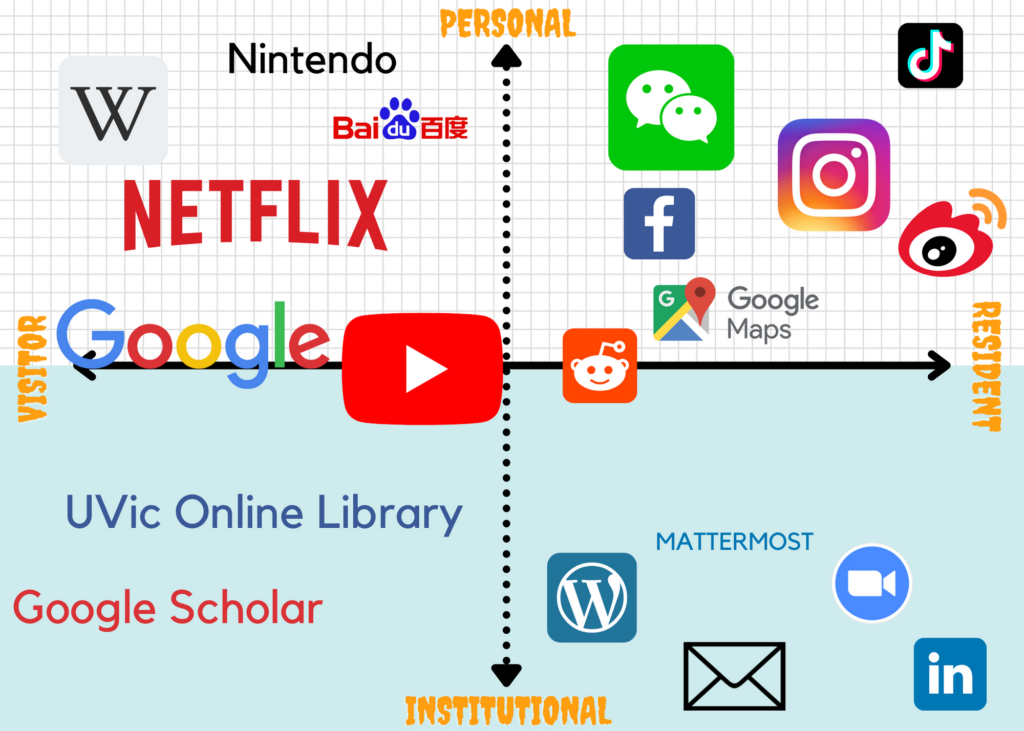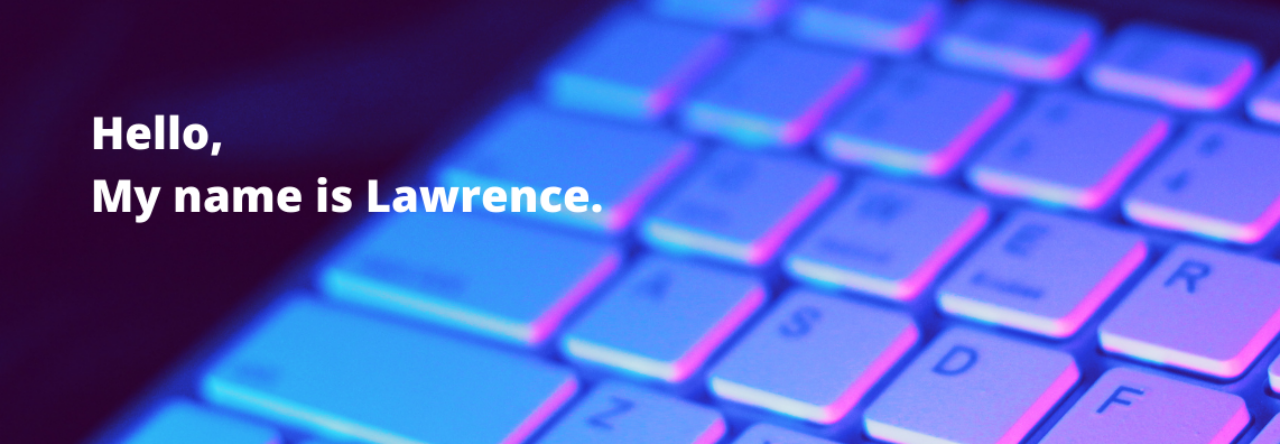
Above is my V&R map. I mainly using WeChat daily to keep in touch with family and friends while studying abroad. Instagram, Weibo and Tiktok are places where I could keep up to date with the latest trends. In addition, I love to write comments on Google Maps about a restaurant that I have been to and liked. Email, Zoom and UVic online library are the ones that I primarily use for schoolwork. LinkedIn is a place that can be connected with people in a similar field of study. Undoubtedly, I search for many things online every day, for example when is the 2021 Halloween. In this case, Google, Wikipedia and Baidu are platforms where I could find all this information.
What digital platforms are students currently using to develop their professional network?
The most common digital platforms students currently using to develop their professional network are Facebook, LinkedIn, and Instagram. Many people using Facebook to connect with their family, friends and even colleagues. Facebook displays information about your job and education. You might even get to know employers and find they have great opportunities for internships or even permanent staff jobs at their company. Moreover, the chat group is formed on Facebook. One of my friend who is currently studying in Biology at UVic. He joined a group, Jobs in Environmental Studies and Ecology @UVic, on Facebook, and most people in this group are undergraduate students or graduate in the science field at UVic. People share job posting from all over the world in this group, and most of the job opportunities are in Canada. But it is impressive that you could connect to someone who studied and graduated in a similar field. Comparing to Facebook, LinkedIn is mainly for developing a professional network. LinkedIn is today’s fastest-growing recruiting company, and the purpose of the website is to allow registered users to maintain the contacts they know. User can invite people that he/she knows to become contacts, and also use the platform to find and expand their contacts. Through the connection and communication of these contacts, they can find suitable jobs or better job opportunities through LinkedIn. Instagram has become a popular social media platform for small businesses. I have many friends who are using Instagram to developing their professional network. For example, a friend of mine is currently studying in Media Arts, and he has opened an official account for his studio on Instagram. He posting pictures or short clips of his work, and people would contact him for business on Instagram.
What could the student consider in expanding their professional learning network?
As a student, it is the easiest time of your life to expanding your professional learning network. You could connect with fellow students in your department. Students can meet and connect to people who have a similar interest in the field from volunteer and internship opportunities. Nowadays, many people have decided to connect and expand their network through digital platforms. From my point of view, there are different platforms for students to developing their professional learning network with different professions. For a science student, the most common way to expanding their professional learning network would be connecting to peers and instructors at school and scientific conferences. They are more likely to use LinkedIn for their potential connections because it looks more professional than an account on Instagram. When it comes to art students, Instagram becomes the primary tool where they post their work. The flexibility of the system affords the student the ability to personalize their account. Another thing that students should consider is their objective. To illustrate, a student who wants to start his/her business would connect to someone who has their business started.
In your network how can you create a digital identity/ reputation?
A person’s reputation is always related to their conduct, ability, and achievement. One way to build trust is to share a positive experience. You can show off your achievements or awards. The online world is the same as the real world. To build your reputation, you must participate in various activities, stand up for morals, stand up for others, and help others in the online world. It is necessary to have such a long-term management mentality to make better use of the Internet, also mastering skills, which help promote yourself in the online world.
Discover what an employer would find based on your V+R Map if you applied for a job with them?
An employer would find both my personal and professional life based on my V&R map. They would find out my previous education and work experiences on my LinkedIn account. They would also find more information on my skills and achievements on LinkedIn. Next, they might investigate my personal life on Facebook and Instagram. On Facebook, they would find that I am a person who loves outdoor activities and has always been pro the environment protection. And they would find I am a cat lover on Instagram, I love animals. They would figure out that I am a person who is constantly active on the different digital platforms based on my V&R map, and I am comfortable with various forms of internet communication. Employers could discover I spent more time on Google Scholar and UVic online library (where highly credible and reliable resources are) rather than Wikipedia with my academic research.

